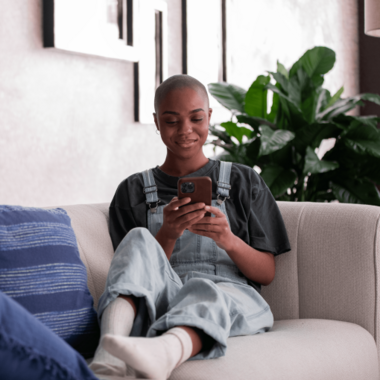
- 6 minutes read
Disruption and the new retail experience
Not only are consumers savvier than ever, they also want to be in control of every aspect of their shopping experience. Here’s how merchants can stay on top of this development and reap its rewards.
There’s a new way to shop and it’s rapidly disrupting the status quo. The trend is called dual-browsing, and it’s completely shifting the balance of power.
Not only are consumers savvier than ever, they also want to be in control of every aspect of their shopping experience; from the quality of the product, price point, payment method and delivery options. But while things can be tough for those who won’t adapt, dual-browsing also presents huge new opportunities. Here’s how merchants can stay on top of this development and reap its rewards.
Mobile shopping has come of age. People love being able to browse and complete transactions at their leisure — during their daily commute, on their lunch break or even in bed at night. And they feel increasingly confident about using their smartphone to do so.
According to Lost In Transaction, Paysafe’s independent study into consumer behaviour, customers’ attitudes aren’t the only things mobile is changing. The way they shop is also evolving at a rapid rate.
On the one hand, the reality for merchants has never been starker: get with the program or be relegated into the past. But for those that face the challenge head on, the opportunities for growth are truly unlimited.
Dual-browsing and its implications for the physical store
The key behavioural trend uncovered by Paysafe’s report is that the line between online and offline is becoming increasingly blurry. 46% of respondents said they look for better deals and complete purchases on their phones, even as they scan the aisles of brick-and-mortar stores. The phenomenon, called dual-browsing, has important implications for the future of the physical shopping experience.
Firstly, customers are increasingly savvy. Mobile has given them greater access and more choice at a range of different price points. Inevitably, they’re leveraging this to enhance their shopping experience.
More importantly, mobile has empowered consumers to take control. They’re more than happy to walk out the door if a store doesn’t provide what they’re looking for. This applies as much to product selection and price as it does to quality and customer service, including which payment methods and delivery options they offer.
Clearly, stores can no longer be simple outlets. They must offer their customers something more. A unique experience. And a chance to engage with and immerse themselves in the brand.
The bigger picture: from mere stores to brand showrooms
Dual-browsing is a generational trend. The vast majority are under 34 — Millennials and Generation Z. These younger generations grew up with digital. They’re self-starters and, especially in Generation Z’s case, they want to be part of the solution.
Unsurprisingly, the brands that have been most successful at reshaping the physical store are those that embraced the breakdown of barriers between online and offline and let younger generations’ attitudes inform their approach. Put another way, they’ve turned their stores into brand showrooms that marry online conveniences with a personal touch.
Apple is the poster child of this new breed of retail experience. Their stores have always focused on building a sense of community through a triple whammy of aesthetics, value and engagement. More than a store, or even a showroom, Apple Stores are “a modern-day town square” where people connect with the brand and can even learn more about a topic of interest or discover a new passion.
Similarly, Amazon has created the first checkout-free supermarkets, where people can physically shop for groceries without the hassle of waiting in line. This is especially significant, as Paysafe’s research shows most people still like to buy their groceries in person despite their affinity for dual-browsing and digital payments.
Looking ahead
Dual-browsing is increasingly becoming part and parcel of the shopping experience. So, as younger generations’ spending power continues to grow, merchants will need to find ways to cater to their expectations, or risk becoming obsolete.
The good news is that physical stores can overcome the dual-browsing challenge, simply by embracing the change. The sooner merchants understand these new shopping models and accept them, the sooner they can make modifications that meet customers’ evolving needs and allow them to compete — even with giants like Apple and Amazon.
Want more in-depth insights on shifts in customer attitudes and new trends in shopping and payments? Download the full Lost in Transaction report.




